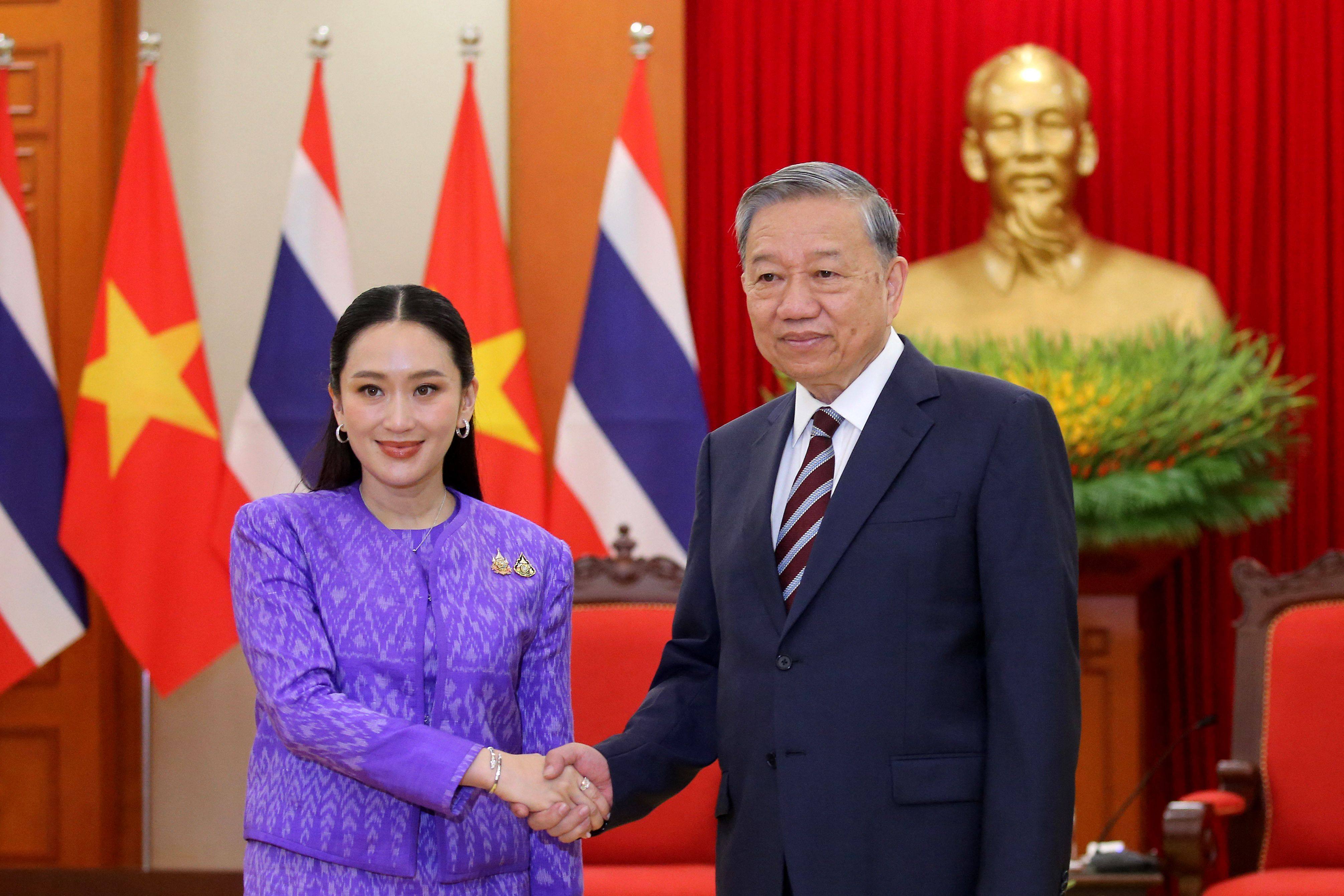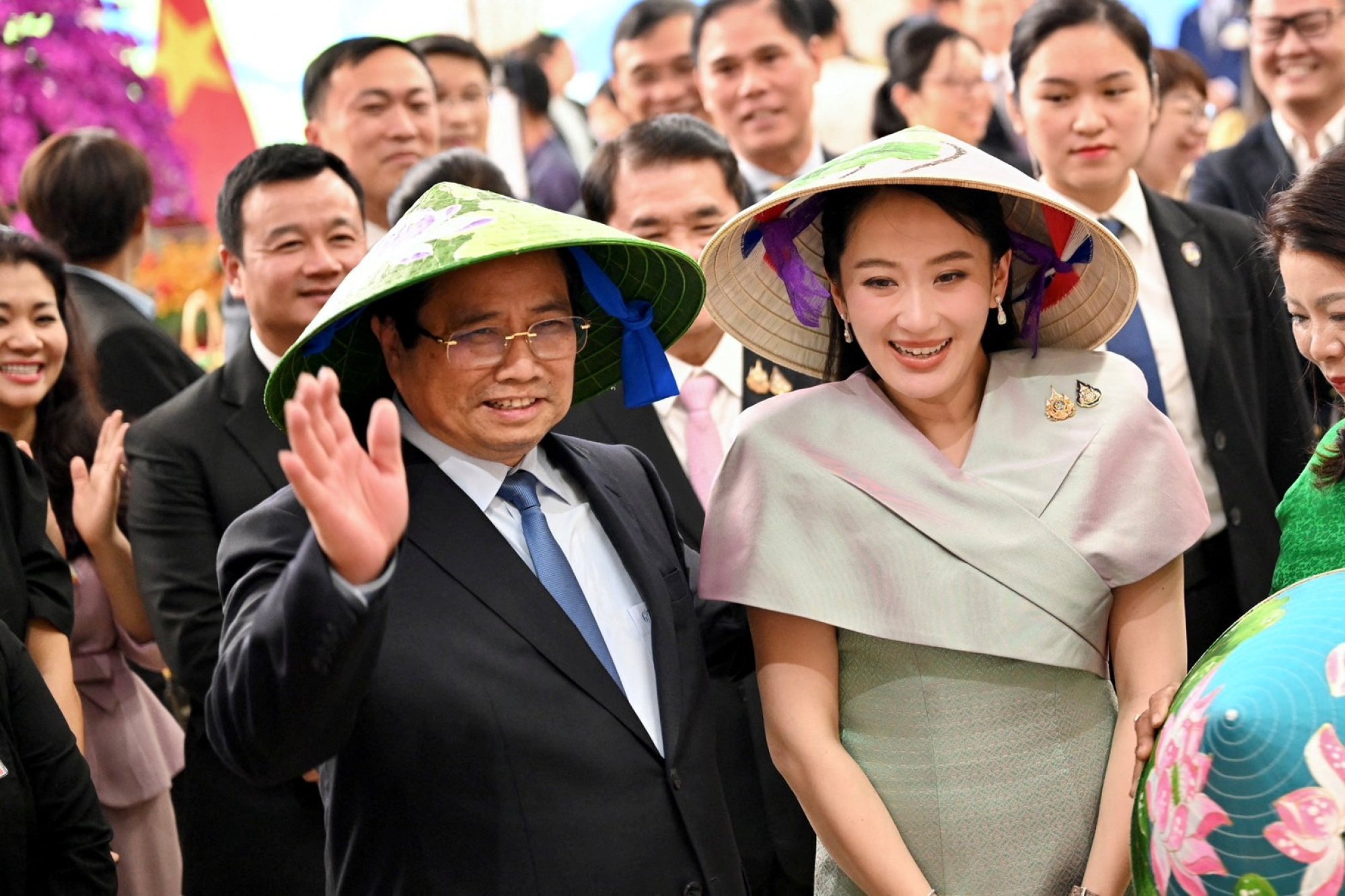Vietnam and Thailand forge strategic ties to boost trade, reduce reliance on China
Vietnam and Thailand’s upgraded partnership aims to boost trade to US$25 billion by 2030, reflecting Hanoi’s tiered diplomacy approach

Vietnam and Thailand have upgraded their ties to the highest level of diplomatic cooperation – a move that analysts say reflects Hanoi’s strategy of deepening regional ties even as it quietly ranks its partners’ strategic weight using a “two-tiered stratification system”.
The new Comprehensive Strategic Partnership (CSP), formalised during Thai Prime Minister Paetongtarn Shinawatra’s visit to Hanoi last Friday, places Thailand among a growing list of countries with which Vietnam has strengthened its diplomatic framework in recent years.
Vietnamese Prime Minister Pham Minh Chinh said the CSP was “a symbolic milestone” and “a strategic commitment, affirming a breakthrough in the content and depth of cooperation”.
A joint statement following the meeting said both sides would work to raise bilateral trade to US$25 billion by 2030, with priority given to clean energy, the digital economy and hi-tech agriculture.
Thai government spokesman Jirayu Houngsub added that the upgraded ties would also bolster collaboration on political and security issues, particularly in combating transnational crime and drug trafficking.
Since signing its first CSP with China in 2008, Vietnam has formed partnerships with several countries, including the US, Russia, India, Singapore, Malaysia and Japan, with the last 10 agreements made since 2022.
Thailand has CSPs with China and Japan, and strategic partnerships with Cambodia, India and Indonesia.

Prem Singh Gill, a visiting scholar at the Muhammadiyah University of Yogyakarta’s faculty of law, said that when examining the CSPs, “a clear stratification emerges”.
The first tier involves ties with global powers that directly affect Vietnam’s security and economic landscape – China, Russia, India, South Korea, Japan and the US.
These were cultivated for both “diplomatic prestige” and “substantive strategic advantage”, featuring stronger institutional mechanisms, high-level exchanges, and increased defence and economic cooperation, Gill noted.
The second tier CSPs with Southeast Asian countries were crucial to Vietnam’s integration strategy, prioritising stability and economic ties over defence, Gill said.
Pointing to the CSP with Thailand, Gill said that the joint statement focused heavily on economic cooperation, people exchanges, and regional forum coordination.
He added that such a “tiered approach” presented challenges for Vietnam’s diplomacy.
“[It] requires careful calibration to maintain the perception of equidistance between competing powers while securing substantive benefits from each relationship,” he said.
Carlyle Thayer, emeritus professor at the University of New South Wales in Australia, said Vietnam categorised China and occasionally Russia as “comprehensive strategic cooperative partners”, an indication that the two regional powers topped the hierarchy.
Thailand was an “obvious outlier” among Southeast Asian countries with a CSP agreement with Vietnam due to their historical rivalry, Thayer noted.
The animosity primarily stems from the civil war in Cambodia during the 1970s, where both sides either supported or sought to overthrow the Khmer Rouge regime, alongside Bangkok’s perceived fear of Vietnamese expansionism.
However, the two countries became strategic partners in 2013, collaborating on issues like drug and arms smuggling, human trafficking, money laundering, call centre scams, and illegal fishing.
Huynh Tam Sang, an international-relations lecturer at Vietnam’s University of Social Sciences and Humanities, said Hanoi’s attempt at forging CSPs with its Southeast Asian neighbours highlighted efforts in weaving “a network of middle-power collaboration”.
“[This is] aimed at enhancing its international standing and cultivating strategic fallback options,” Huynh said, adding that the approach was crucial amid the current “geopolitical and geoeconomic turbulence”.
Given the US tariffs and uncertainties generated by the US-China trade war, Vietnam and Thailand were working together to strengthen supply chain resilience and promote sustainable, inclusive growth, he added.
Washington has delayed the implementation of the 46 and 36 per cent tariffs on Vietnam and Thailand until July, substituting them with a 10 per cent rate.
“The risks of supply chain disruptions loom large for both nations, making the elevation of their partnership not only timely but strategically essential,” Huynh said.
The CSP could lead to continued growth in investment and trade, especially through increased Vietnamese investment in Thailand, he said.
As the two leading economies in the Mekong subregion, Vietnam and Thailand boast large markets, robust production capacities, and similar product lines, he added.
Last year, two-way trade reached US$20.2 billion, an increase of 6.3 per cent over the previous year, according to Vietnamese government data.
The economic integration in the partnership potentially reduces both countries’ economic dependence on ChinaPrem Singh Gill, analyst
In 2024, Vietnam was Thailand’s sixth-largest export destination, while Thailand was Vietnam’s ninth.
While the CSP avoids explicitly antagonising China, its language on maritime security and the South China Sea reflects a shared concern about Chinese assertiveness, according to Gill.
“The economic integration promised in the partnership potentially reduces both countries’ economic dependence on China,” he noted.
Beijing was likely to respond by enhancing its economic ties with both countries through the Belt and Road Initiative and the Lancang-Mekong Cooperation framework, Gill added.
The former is China’s global infrastructure development strategy and the latter focuses on economic development among China and five Southeast Asian nations: Cambodia, Laos, Myanmar, Thailand and Vietnam.